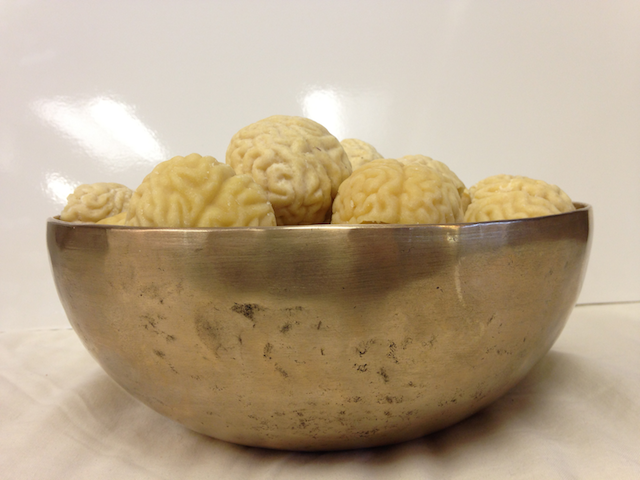
Chocolate
Anandamide is a substance found in both the brain and peripheral body that has unique properties. It is one of the body’s natural cannabinoids and works on receptors in the brain to produce pleasure, euphoria and a state of well-being. In the body (and at times in the brain) it works on other receptors to promote the anti-inflammatory cascade. When inflammation occurs in the brain, cells known as microglia are activated. They produce inflammatory substances and devour their targets. The brain uses microglia to destroy synapses that will be replaced by new connections, to perpetuate long term potentiation, to repel invading microbes and devour debris. Unfortunately microglia may also attack other brain tissue in various degenerative conditions.
When these microglia are activated, they go through a shift in appearance, sprouting tentacles and surface receptors known as cannabinoid-2 receptors (CB-2R). Meanwhile a mix of various molecules in synaptic spaces forms together to become anandamide and this attaches to CB-2R on nearby activated microglia, stopping them from producing inflammatory substances and reverting them back to an inactive state. Anandamide is one of several substances that helps the brain turn off the inflammatory process. Local synapses are no longer destroyed, long term potentiated nerve cells quiet down and inflammatory activity is halted. Without this type of off-switch, any inflammatory process, including normal synaptic replacement, would run amok and destroy the brain.
In the peripheral body, anandamide is one of the substances involved in the anti-inflammatory activity that leads to resolution of inflammation, as well. As in the brain, CB-2 receptors, expressed on the surface of inflammatory cells in the tissues, receive anandamide and begin the process of deactivation and return to a normal state, resulting in tissue maintenance and repair. As in the brain, anadamide alone is not sufficient to reverse inflammation, but it is one of the molecules that promotes the resolution of it.
Anandamide itself is a short-lived substance that breaks down in a matter of seconds to other, inactive components. However, there are two enzymes that keep it active longer during inflammatory states, making it more effective by preventing it from quickly being neutralized.
The question is, what does this have to do with chocolate? It turns out that among other anti-inflammatory compounds, raw chocolate, known as cacao, is a food rich in anandamide and the enzymes that prevent its rapid destruction. Unfortunately, once the cacao bean is roasted at 470 degrees F for a day to make chocolate, most of the anandamide and its helper enzymes are destroyed. While cooked chocolate maintains other substances that have anti-inflammatory properties, the amount of anandamide is negligible.
We have been studying raw cacao with our patients to see if it is helpful with pain. While this is not a taste most people enjoy, we have found that by mixing it with honey, fruit or chocolate, the brain perceives a pleasant change to the taste of cacao and it becomes quite enjoyable for most people. In a demonstration of the brain’s neuroplastic processes, the bitter taste of the raw cacao is instantly replaced with the sweet and pleasurable taste of the other substances, allowing the chocolate flavor of the cacao to emerge and dominate the senses. Remembering that one of the molecules the brain releases during pleasure is anandamide, we assume that this also occurs while eating the anandamide containing cacao. Additionally, since the cacao contains the two enzymes that slow down breakdown of anandamide in the body, we also have hypothesized that this makes more of this molecule available to fight inflammation. Additionally, we are currently exploring transdermal approaches to delivering this molecule locally by itself and combined with other anti-inflammatory substances, that are naturally present in the body. We have explored the use of raw cacao with several patients and have found positive benefits. We are planning to collect data on a case series of patients with persistent pain to evaluate their response. We will then design a prospective study to test clinical benefits of regular consumption of raw chocolate vs cooked chocolate for reduction of persistent pain, using standardized pain scales and functional imaging.